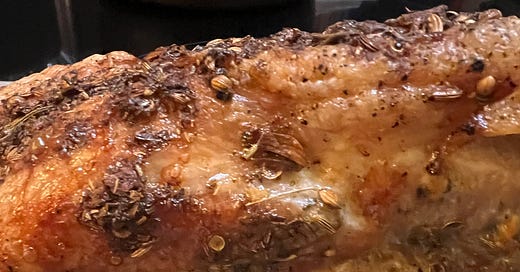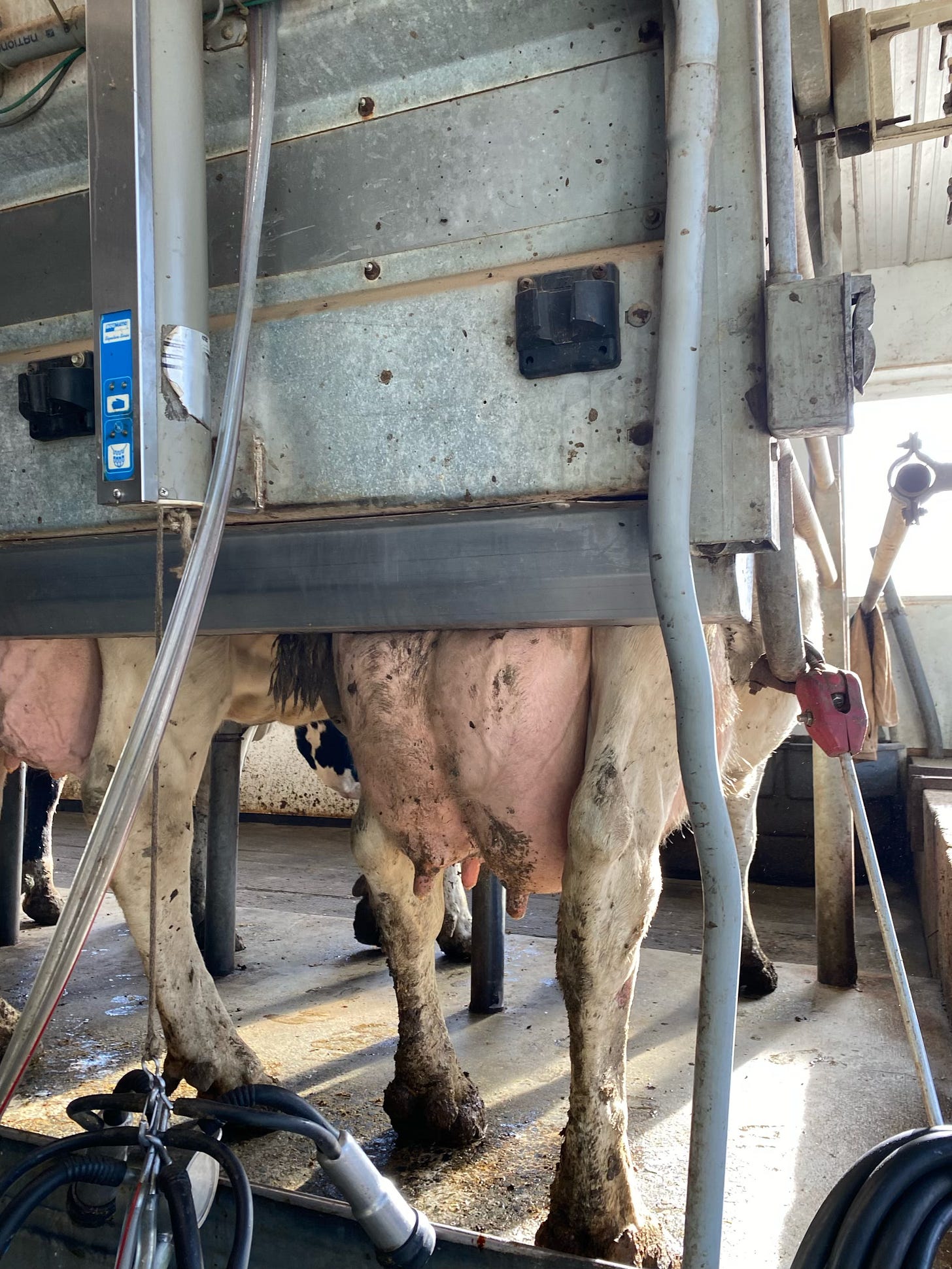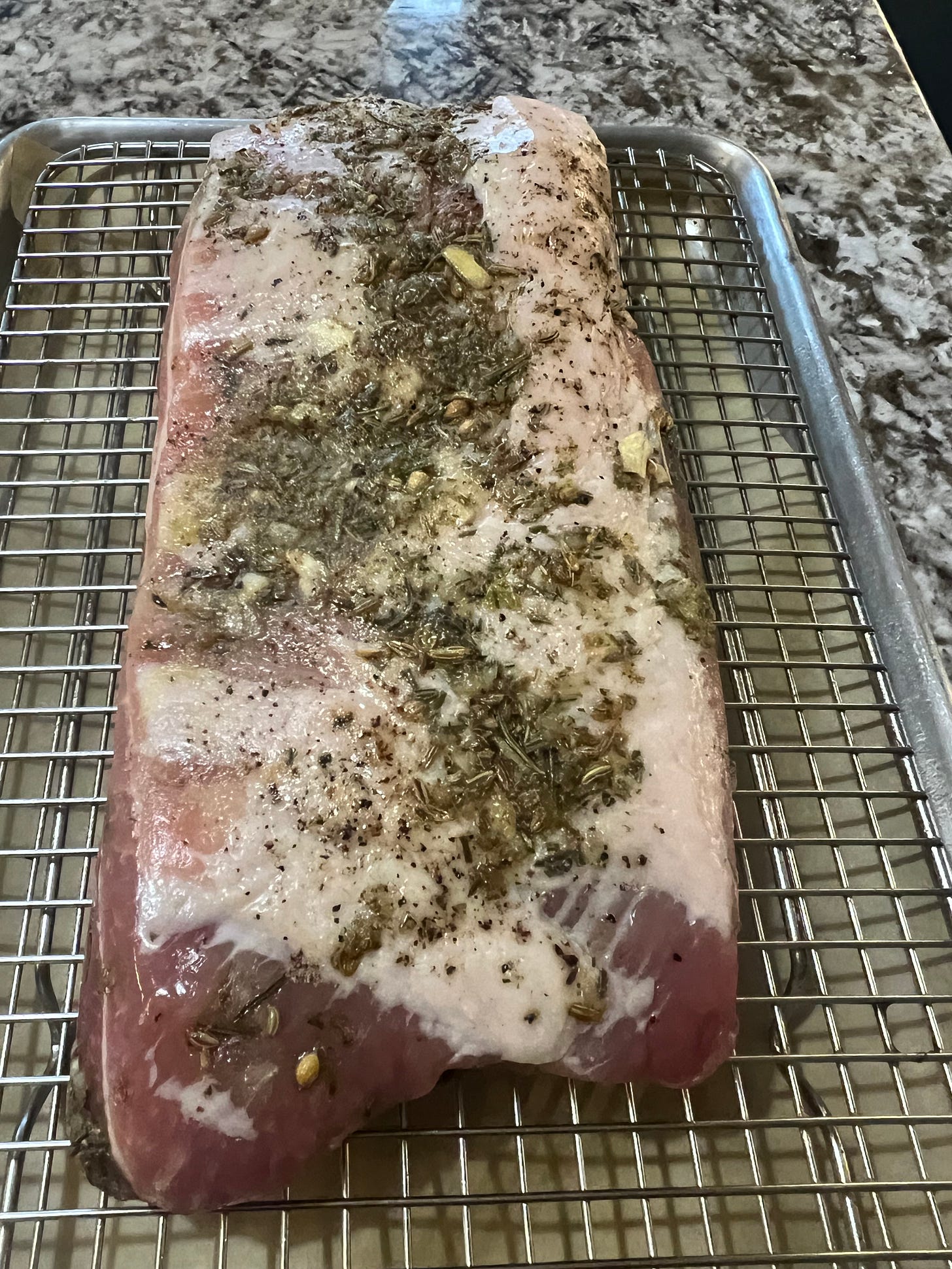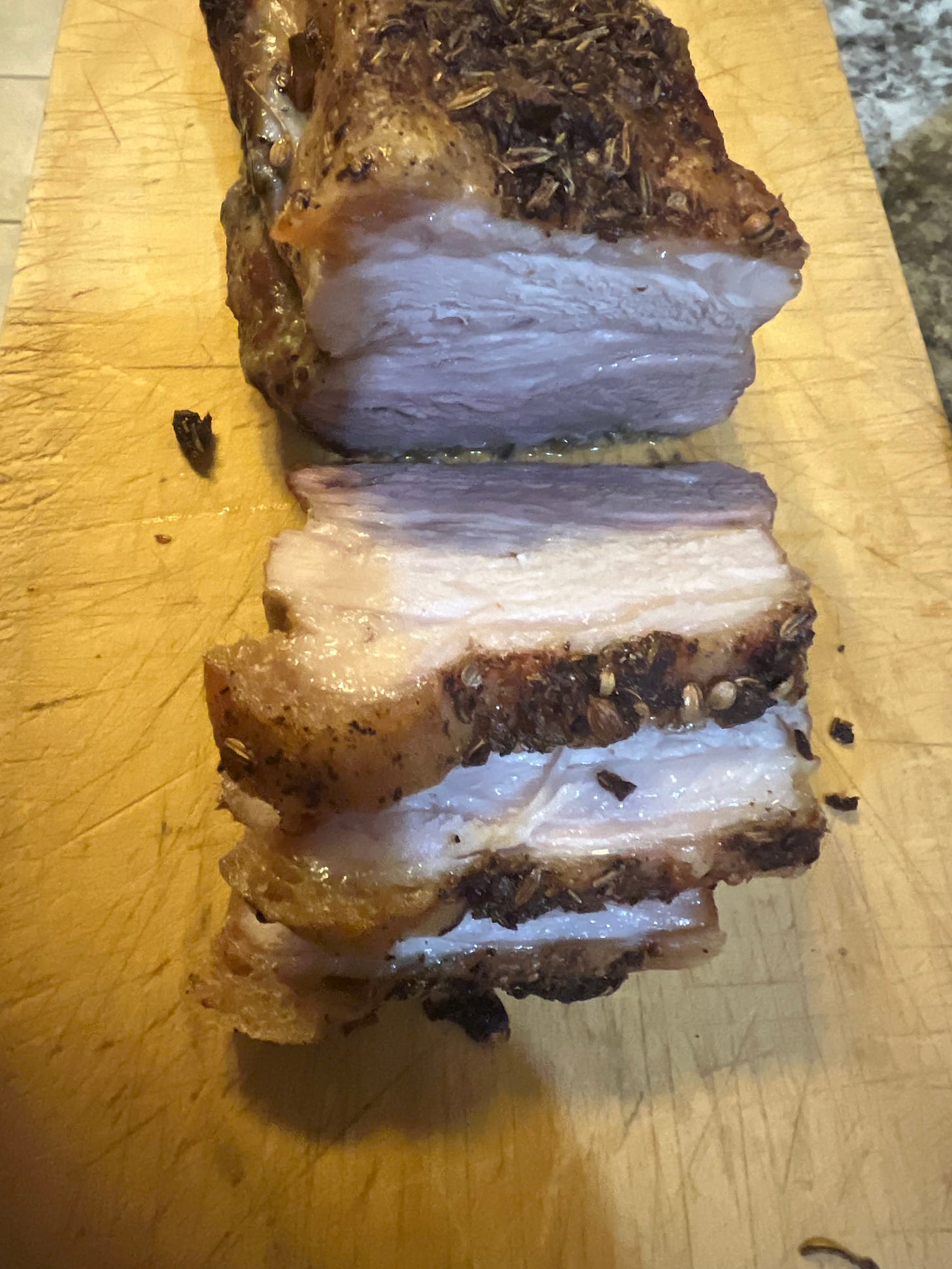Issue #145: Pork Belly Porchetta
Country Mouse, City Mouse, A Tourist in Two Places, Cheater's Porchetta
I’m writing to you this week from NYC, where I’ve returned for the launch of the Jewish Food Society’s new cookbook, The Jewish Holiday Table. It’s a beautiful compilation of stories and recipes for holiday feasts collected from the diaspora of Jews around the world. Full disclosure: I contributed a chapter—a story, a menu, and a table, actually—for Rosh Hashana. But my totally objective opinion is that everyone needs a copy of this book, which you can purchase here.
After three weeks of living in New Hampshire, I’ll admit it feels a little strange to be back in New York as a visitor, back in our apartment, which is staged with our furniture but with none of our stuff. (By the way, our three-bedroom, two-terrace, two-refrigerator apartment in Gramercy is still for sale. See listing.) I felt an urge to walk everywhere and eat everything, feelings I reserve for visiting favorite cities.
Just before I left for the Big Apple this past weekend, as welcome gifts from various neighbors we received three pints of homemade maple syrup, a dozen eggs, a 700-page history of Plainfield, New Hampshire, and a hand-drawn map of our four corners that indicates the names of all the neighbors, their contact information, and the names of their dogs. It makes me smile to think that Nate, Milo, and I will be on the next version of this map. I sent a friend visiting from Maine into the local dairy at the end of our street to buy a quart of milk and she came out 20 minutes later having milked a cow.
Just a five-hour Dartmouth Coach bus ride away, my last 36 hours in Manhattan have been very different.
There was the book party at the swank Café Caryle, where Ertha Kitt once sang Happy Birthday to me with her sexy septuagenarian leg on my chair, catching up with friends I didn’t have a chance to see before we decamped, eating some favorite things (dim sum, pizza, babka, herring, smoked fish, and fresh pasta) and walking, walking, walking to take advantage of the beautiful spring weather.
Three weeks into our new adventure, both country life and city life feel very natural, which of course makes them both feel surreal. I’m enjoying the sensation of cultivating a different lifestyle, a new set of experiences, while the old ones recede into stories.
Now that the kitchen in Plainfield is set up (if nothing else) and we’ve begun receiving guests at our little patio table covered with a picnic blanket in our barren breakfast nook with a view, I’ve been cooking and baking again. Come to think of it, that may be why I feel grounded both here and there, as cooking always centers me.
Among the many things I’ve made, I returned to a favorite way of preparing pork belly in the style of porchetta—at odds, I’m aware, with the opening of this newsletter about my contribution to a Jewish holiday cookbook. Porchetta is usually made from a whole, boned pig, seasoned and rolled with fennel, garlic, rosemary and other herbs. Among my fondest Italian food memories are the porchetta panini you get from rosticceria trucks at neighborhood street markets. In December, we stumbled upon the charming, 100-year-old charming Porchetteria Granieri in Florence.
Instead of roasting a whole pig or even using any complicated tie up of pork belly and loin, which you will see recommended on Youtube videos, at home I simply season a slab of pork belly and roast it flat for a delicious result. It couldn’t be easier. You can use any size piece of pork belly, with skin or without. Just adjust the amount of seasoning you make to fit. The longer you let the pork sit in the fridge to marinate—I’ve let it go as long as five days—the better, though you can roast it right away if you must.
Although once common and cheap, pork belly’s popularity has made it harder to find and more expensive. Also, since everyone’s favorite pork belly is bacon and you can charge more for cured, smoked, and sliced pork belly than you can for fresh, it’s not always available. When in doubt, you’ll find it in an Asian market. I’ve already located two local sources, one from an award-winning cheesemaker in Vermont who feeds his pigs with whey, the other from a New Hampshire farm. Both were excellent.
When choosing a piece of pork belly for roasting, you want one with as much streaky meat as possible. Look through your options in the meat case or ask your butcher to show you a few pieces so you can select the one that has the best meat-to-fat ratio. A slab of pork belly takes longer to cook than you might think because you need time for the meat to tenderize. Don’t be tempted to stop the cooking when it looks done. Complete my recommended roasting time. One of the many nice things about pork belly is that with all that fat, you don’t have to worry about the meat drying out.
RECIPE: Pork Belly Porchetta
Yield 4 to 6 servings
3-pound piece meaty pork belly, with or without the skin
2 to 3 cloves garlic, chopped
Kosher salt
2 sprigs fresh rosemary, stems removed
1 tablespoon fennel seed
1 teaspoon coriander seed (optional)
2 or 3 tablespoons extra-virgin olive oil
Freshly ground black pepper
Lay out a large piece of plastic wrap on a clean work surface. If your pork belly has skin and/or a particularly thick layer of fat on top, score the skin or fat with a sharp knife, making a diamond pattern.
On a cutting board or in a mortar and pestle, combine the garlic and a very generous pinch of salt. Chop and smear the garlic on the cutting board with your knife or pound with a pestle to make a paste. Add the rosemary leaves (off the stem) and mince or pound together with the garlic. Add the fennel and coriander seeds, if using, and continue chopping/pounding to gently crush the seeds. Transfer to a small bowl, add some more salt and the olive oil and mix to make an aromatic paste. Spread this paste all over the surface of the pork belly. Wrap the seasoned pork belly in the plastic wrap. Place on a plate and store in the fridge for as long as you can, up to four or five days.
To cook the pork belly, preheat the oven to 350°F. Line a sheet pan with parchment (to ease cleaning), place a wire rack on top, and set the marinated pork belly on the rack, fat or skin side up. Set in the preheated oven and roast for 2 hours 15 minutes. The pork belly will shrink significantly and a large amount of fat will render into the pan. If your pork belly doesn’t have the skin on it, remove from oven. If your pork belly has the skin on it, at this point turn up the oven to 450°F., and continue to roast 15 minutes or so, until the skin crisps and browns. Either way, the roasted pork belly should sit at room temperature for 5 minutes to relax before slicing across the grain into 1/2-inch thick pieces.









